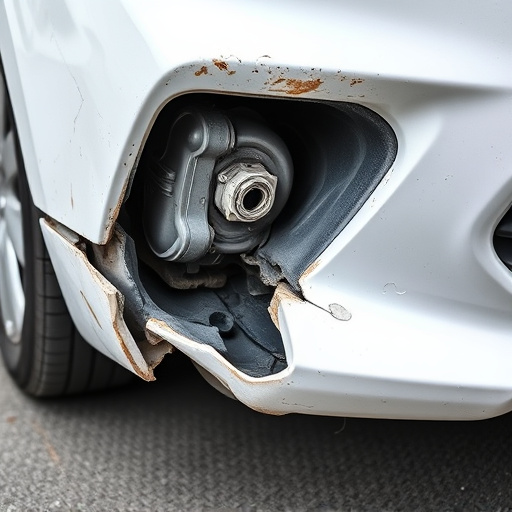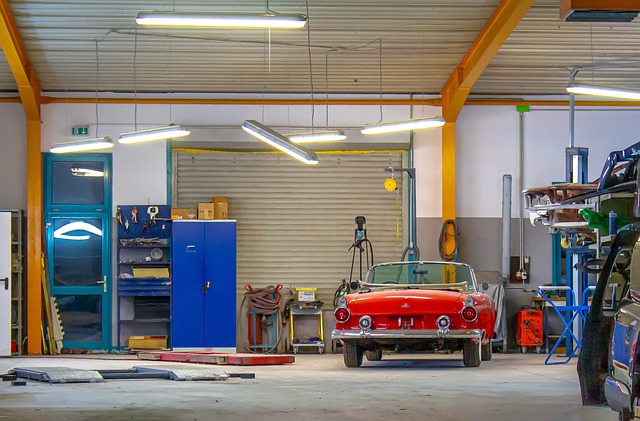Electronic diagnostics repair in modern vehicles relies on sensor networks and advanced tools for accurate problem identification, such as error code scanners. Technicians use diagnostic codes to pinpoint issues like structural damage or airbag problems after collisions. Best practices include organized workspaces, up-to-date tools, proper training, and a systematic approach involving inspection, disassembly, replacement with genuine spares, and retesting to enhance accuracy and customer satisfaction in electronic diagnostics repair.
Mastering electronic diagnostics repair is crucial in today’s tech-driven world. This comprehensive guide delves into the intricacies of these complex systems, equipping you with essential tools and techniques. From understanding system functionalities to effectively troubleshooting common issues, we provide a step-by-step approach. Furthermore, discover best practices for precise repairs, ensuring longevity and optimal performance. Elevate your skills in electronic diagnostics repair and navigate this game-changing landscape with confidence.
- Understanding Electronic Diagnostics Systems
- Troubleshooting Common Issues Effectively
- Best Practices for Successful Repairs
Understanding Electronic Diagnostics Systems

Electronic Diagnostics Systems are the backbone of modern vehicles, playing a pivotal role in monitoring and controlling various functions. These systems encompass sensors, modules, and software that work harmoniously to ensure optimal vehicle performance and safety. Understanding this intricate web is crucial for effective electronic diagnostics repair. At its core, it involves interpreting data from sensors, identifying anomalies, and diagnosing issues accurately. For instance, a faulty sensor might send incorrect readings, leading to misdiagnoses, which in turn requires precise troubleshooting to replace or recalibrate the sensor without resorting to costly auto glass replacement.
Imagine a Mercedes Benz collision repair scenario where electronic diagnostics come into play. After an accident, these systems can help identify structural damage, airbag deployment issues, or even subtle problems with auto repair services. Technicians must be adept at reading diagnostic codes and using specialized tools to navigate this digital landscape. This process not only saves time but also ensures repairs are done right, preventing further complications. By embracing advanced technologies and staying updated on the latest developments in electronic diagnostics repair, professionals can offer efficient and reliable solutions, enhancing customer satisfaction.
Troubleshooting Common Issues Effectively

When it comes to electronic diagnostics repair, troubleshooting common issues effectively is a key skill for any technician. Start by identifying the problem accurately; many modern vehicles are equipped with advanced systems that require specialized tools and knowledge. Using state-of-the-art diagnostic equipment, you can scan the vehicle’s computer for error codes that point to specific components or systems in need of attention. This method is much more precise than traditional trial-and-error approaches.
Once the issue is identified, technicians can employ targeted strategies. For instance, issues related to power and ground loops might require checking connections and replacing faulty cables, while communication protocols like CAN bus problems could necessitate recalibrating sensors or modules using specialized software tools. Remember, modern vehicles often incorporate complex systems such as dent removal or collision repair processes—including paintless dent repair techniques—which demand a deep understanding of both mechanical and electronic components to ensure seamless integration and optimal performance.
Best Practices for Successful Repairs

When it comes to electronic diagnostics repair, adherence to best practices is paramount for successful outcomes. Begin by ensuring your workspace is organized and equipped with the latest tools tailored for modern vehicles. This involves staying updated on constantly evolving technologies and standards in the auto industry, especially concerning electronic systems. Proper training and certifications are also vital; they equip technicians with the knowledge to interpret complex data accurately.
Another key practice is implementing a systematic approach. Thoroughly inspect the vehicle, identifying the faulty component or system through advanced diagnostic tools. This process demands patience and meticulous attention to detail. Once the issue is pinpointing, disassemble and inspect the affected parts carefully. Replace them with genuine spares, ensuring compatibility and quality. Lastly, retest the system meticulously to verify repairs, mimicking real-world driving conditions for a comprehensive assessment. These practices significantly enhance the accuracy and longevity of electronic diagnostics repair in auto body services or collision repair shops, ensuring customer satisfaction in vehicle body shop environments.
Effective electronic diagnostics repair requires a deep understanding of these complex systems, meticulous troubleshooting, and adherence to best practices. By mastering these skills, technicians can efficiently diagnose and resolve issues across various industries, ensuring optimal performance in electronic devices and vehicles. Incorporating these strategies into your workflow will enhance your ability to provide top-quality repairs and stay ahead in the field of electronic diagnostics.














